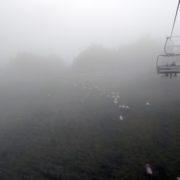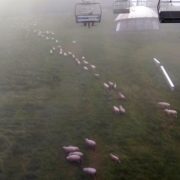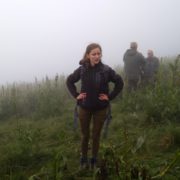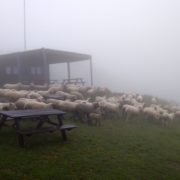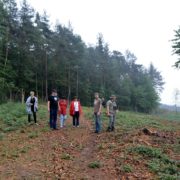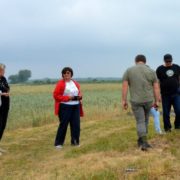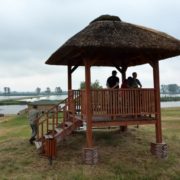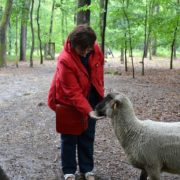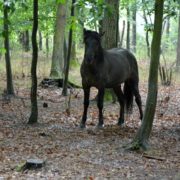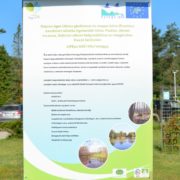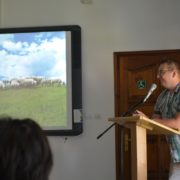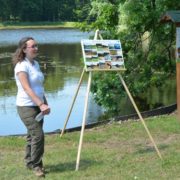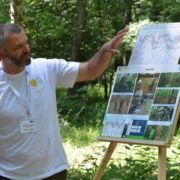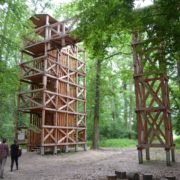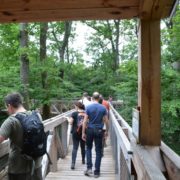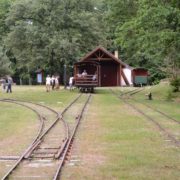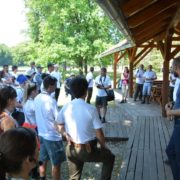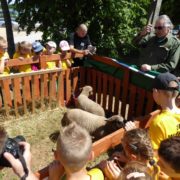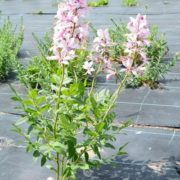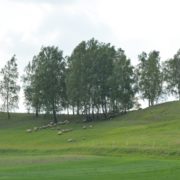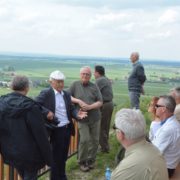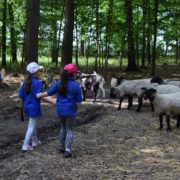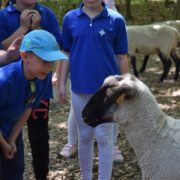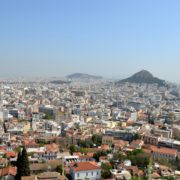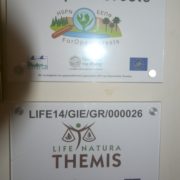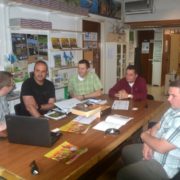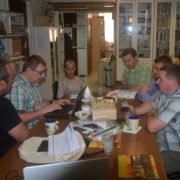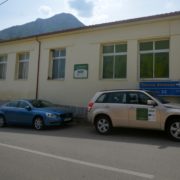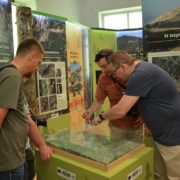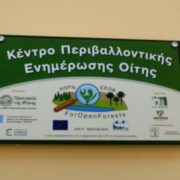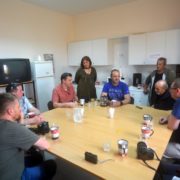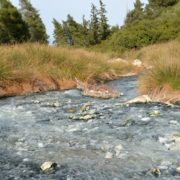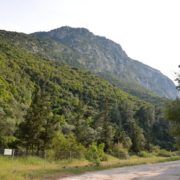News
A conference closing the LIFE Beskidy project
On the 13th-14th of June, we took part in the conference in Ustroń, summarizing the LIFE12 NAT/PL/000081 project, titled Protection of non-forest accumulations in the Beskidy Landscapes Parks.
The programme of the conference included a presentational and an on-site part. On the first day, nine presentations were delivered, which concerned both the summary of the current activities of the project and the results of the environmental monitoring. We learned about the history of Beskidy mountain farming, possibilities of combating the Copper Tops and amphibian protection on the example of the Wigry National Park LIFE project. It was also an opportunity to present the hitherto activities of our project.
The second day of the conference took place in the area where the works on active protection were presented, at the top of Poniwiec and Mała Czantoria.
A visit of the Project Monitor
Once again, our project was visited by representatives of the European Commission. This time, besides our monitor Stanisław Tworek, we were visited by Anna McClintock – a financial officer responsible for, among others, the final accounts of LIFE projects. Together they carried out an on site inspection from the substantive, accounting and executive points of view. The activities of the project are getting closer and closer to the end, so it was an opportunity to present practically all surfaces – starting from Górki, through Skorocice (Serratula lycopifolia), Chroberska Wola (new grazing area), Garb Pińczowski, to thermophilous oak tree forests in Młodzawy.
This time, particularly interesting for the monitor were horses grazing in the forests.
A conference closing the KASZÓ LIFE project.
On the 29th-30th of May, we took part in the closing conference of the LIFE12 NAT/HU/000593 project titled KASZÓ LIFE, which was held in Kaszó. The main objective of the project, carried out by a consortium of the Kaszó Forest Enterprise and the Forestry Research Institute (ERTI), was to restore degraded forest habitats in the West-Inner-Somogy region (south-west Hungary) by improving the hydrology of the area and the water supply of forests, wetlands and meadows.
The agenda of the first day included a variety of topics: the demand for water in forests, the extreme balance of water in the Carpathian Basin and the well-being of forests. Then, we had the opportunity to learn about the nature conservation measures that had been implemented as part of the KASZÓ-LIFE project, to see the results of the activities.
The second day included topics such as the spread of invasive insect species and the impact of climate change on natural habitats. There was also an opportunity to present the results of our project so far, with a special emphasis on activities in thermophilous oak tree forests.
The conference was attended by 53 participants. 16 presentations were given: 5 international and 11 Hungarian.
Promotion in Podzamcze
The Świętokrzyskie and Nadnidziadzkie Landscape Parks Complex co-organized the „Our Home – Nature” picnic, which took place on 22th May in the Youth Educational Center in Podzamcze. More than 400 children from primary schools from the Chęcinsko-Kielecki Park took part in the event. A dozen or so institutions set up their tents and prepared presentations that were to interest the children in the environment around them.
Our blackhead sheep farm could not miss out on such an occasion. Three of this year’s sheep – one of them still entirely black – bravely endured the heat and the attempts to feed and stroke them. As always, they aroused great interest. For children and young people, it was an opportunity to have contact with the animals, and for the LIFE team it was an opportunity to provide information about the objectives and ways of implementing our project.
Polish primitive horses join the project
Our flock of sheep has increased its size by ….. two mares. Tysa and Karaska are Polish primitive horses, which will join the herd grazed in the thermophilous oak tree forest in Młodzawy. It is a primitive breed, which has been bred in Poland since 1923. Polish ponies are resistant to difficult conditions (they do not require stable breeding), are not nutritionally demanding, have high adaptation abilities, and at the same time are mild mannered and persistent. They are of a small height, of a stocky build, have a mouse-gray color and have a black streak on their back and streaks on their limbs. For the time being, both mares are in quarantine and pick grass on the meadow in Krzyżanowice, but when they are joined by a young stallion, whom we plan to buy, they will live in the forest with the whole horde, just like their ancestors – the tarpans.
Flowering Dictamnus albus
Hot and dry May was the right time for our plants, which grow on the project’s plantation. Our seed-bred Dictamnus albus blossomed beautifully. It is a long-lived perennial plant of the Rutaceae family , very rare and in danger of extinction in Poland.
The plant is covered with numerous glandular hairs that gives off flammable essential oils with a lemon aroma, especially before the fruit is ripe. In a hot climate, these essential oils can ignite spontaneously, hence the common name of the plant: the „fire bush” or the „burning Moses bush”. In her book „Harry Potter and the Deathly Hallows”, J. K. Rowling described the diptamus potion as having the ability to close up wounds. Indeed, its powdered roots and leaves have healing properties that also speed up wound healing. It should be remembered, however, that this plant is completely protected in Poland, so we can only use herbs from crops in countries where it is common.
Meeting of the Steering Committee
Yesterday, on the 15th of May 2018, the last meeting of the Steering Committee took place. It was also attended by sheep breeders, members of the ZŚiNPK council and Tadeusz Kowalczyk – the Vice-Chairman of the Świętokrzyskie Voivodeship Assembly and Mieczysław Sas – the Vice-Chairman of the Committee on Agriculture, Water Management and Environmental Protection of the Świętokrzyskie Voivodeship Assembly.
The plenary part was hosted by the Local Government Cultural Institution „Kasztelania” in Kije. The meeting began with a welcome by Krystyna Wójcik-Daniluk, deputy director of the Park Complex, and Tadeusz Kowalczyk. The status of implementation of the LIFE project was presented in the presentation by Wojciech Sołtysiak – project manager.
The participants saw the areas covered by the active protection measures in Stawiany in the Kije Commune, where sheep have been grazed since 2015. The site covers several nearby elevations of the land, on slopes of which patches of xerothermic turfs and thermophilic sand based turfs have developed, as described by Tomasz Hałatkiewicz, the Director of the Park Complex.
Another area was the so-called Serpentyny (Zigzags) – a fragment of the Garb Pińczowski, where, in a picturesque scenery, Prof. Czesław Nowak, PhD, Eng., gave a very interesting lecture, widely discussing natural values in the economic development of rural areas on the example of Ponidzie, and Edyta Molik PhD presented the issues related to sheep grazing as a form of management in accordance with the principles of sustainable development.
The participants of the session also visited the unique area of sheep grazing conducted on the grounds of the National Forests of the Pińczów Forest Inspectorate (Co-beneficiary of the project) in the village of Młodzawy. The meeting of the Steering Committee was concluded with a discussion on the quality of thermophilous oak forest habitats and refreshments at the National Forest Tree Nursery – Michałów Forest Inspectorate.
Educational workshops
The four-day educational workshop started on May 8th. Every day, a group of young people from schools in the region took part in field activities: they visited xerothermic turfs on the Garb Pińczowski, a thermophilous oak forest in Młodzawy and our plantation in Krzyżanowice, where the Dictamnus albus has just began to bloom. All groups, from first to eighth grade pupils, participated in the practical activities attentively. They eagerly listened to the geological history of Ponidzie, the curiosities regarding the Nida, the narrow-gauge railway leading to the Garb Pińczowski and the benefits of sheep grazing on the turfs. There was also time for manual work: making models of carlinas and pompons and bracelets made of colored wool. The weather was good and all the groups were leaving Krzyżanowice with smiles on their faces and a solemn assurance that they would surely come back to Ponidzie.
A networking meeting in Greece
Networking with other LIFE projects is an activity which has been defined as mandatory by the European Commission. Inter-institutional cooperation, exchange of experience and information is aimed at acquiring valuable factual and practical knowledge, helping the beneficiaries to effectively implement the planned activities. Networking concerns not only domestic but also foreign projects. As a result, between 16th and 20th April 2018, LIFE project staff took part in a working trip to Greece, where they were introduced to the effects of two LIFE projects: ForOpenForests
and LIFE Natura Themis.
The destination of the visit was Athens, where the headquarters of the Beneficiary coordinating the two projects is located: the Hellenic Society for the Protection of Nature. It is a nationwide association, operating since 1951, whose main objective is to protect the Greek natural environment through environmental interventions, nature conservation projects, environmental education through an educational network approved by the Ministry of Education, and to increase the natural awareness of the Greek community.
The main objective of the ForOpenForests project is to implement effective management of forests and open spaces in order to preserve species, habitat and landscape biodiversity in two Natura 2000 areas (near Lamia): „Ethnikos Drymos Oitis” (GR2440003) and „Oros Kallidromo” (GR2440006).
The aim of the LIFE Natura Themis project is to raise awareness of the damage caused by human activities to wild species and the biodiversity of the island, among the inhabitants of Crete. It also aims to familiarize the public with the concept of „responsibility for the environment” and relevant European regulations governing the human-nature relationship, in particular in Natura 2000 protected areas.
The first meeting with ForOpenForests project manager Christos Georgias took place on the 17th of April. It concerned the introduction to the project assumptions and the specifics of the Coordinating Beneficiary’s functioning. The basic issues related to its implementation so far, the successes, the failures as well as common denominators of the legislation of Poland and Greece were discussed.
On April 18th the main meeting with the teams implementing the above projects took place with the participation of representatives of the ZŚiNPK, HSPN, the Institute for Mediterranean Forest Ecosystems (IMFE) and the University of Athens (UoA). It began with a presentation of the activities of the ZŚiNPK and then the implementation of the LIFE13 NAT/PL/000038 project (Wojciech Sołtysiak) was discussed in detail. Subsequently, Chrostos Georgiadas, the Project Manager of the LIFE11 NAT/GR/1014 project, and Michalis Probonas, the Project Manager of the LIFE14 GIE/GR/0000026 LIFE Natura THEMIS project, shed some light on the issues related to the Greek projects. Additionally, natural education programmes implemented by the HSPN were presented. After the presentation, a discussion began concerning in particular the issues of protection of the habitat *6210 and joint activities and cooperation in the field of ecological education, as well as widely understood cooperation
and exchange of know-how and know-what.
The plan for the next day was to go on an off-road trip to the „Ethnikos Drymos Oitis” (GR2440003) and „Oros Kallidromo” (GR2440006) Natura 2000 areas. Unfortunately, due to spring melts and the location of the areas covered by the project on almost 2000 m above sea level, it was not possible to reach them. In addition, the tour included a visit to a tourist information point with elements of natural education ( Ipati), established as a part of the project, and a visit to the Center for Ecological Education in Stilida, where we got acquainted with the forms of natural education being implemented.
A conference closing the LIFE Warsaw Vistula project
On 16th and 17th March we participated in the conference „Protection of biodiversity in the cities” organized by the Capital City of Warsaw as part of the project „Protection of key bird species habitats in the Central Vistula Valley under intense pressure from the Warsaw agglomeration”.
Twenty presentations were focused on various aspects of nature conservation in urban space. We could find out about examples of beavers’ adaptation to life in cities, ways to protect endangered breeding grounds of waterfowl by building artificial islands in Żerań in Warsaw, or breeding towers for hedgehogs in Toruń, as well as examples of designing parks „friendly” to wild animals.
Another topic presented at the conference was various aspects of the expansion of invasive plant species of foreign origin: from ornamental plants, which find their way from house gardens to the Kampinos National Park, to species such as: the Canadian goldenrod, the maple ash, or the giant hogweed, which force out native species from meadows throughout the country. On the second day of the conference there was a field trip around Warsaw, during which we got acquainted with educational paths, floodplains, on which an educational pavilion is to be built, and artificial floating islands, which are used as breeding places by waterfowl.














